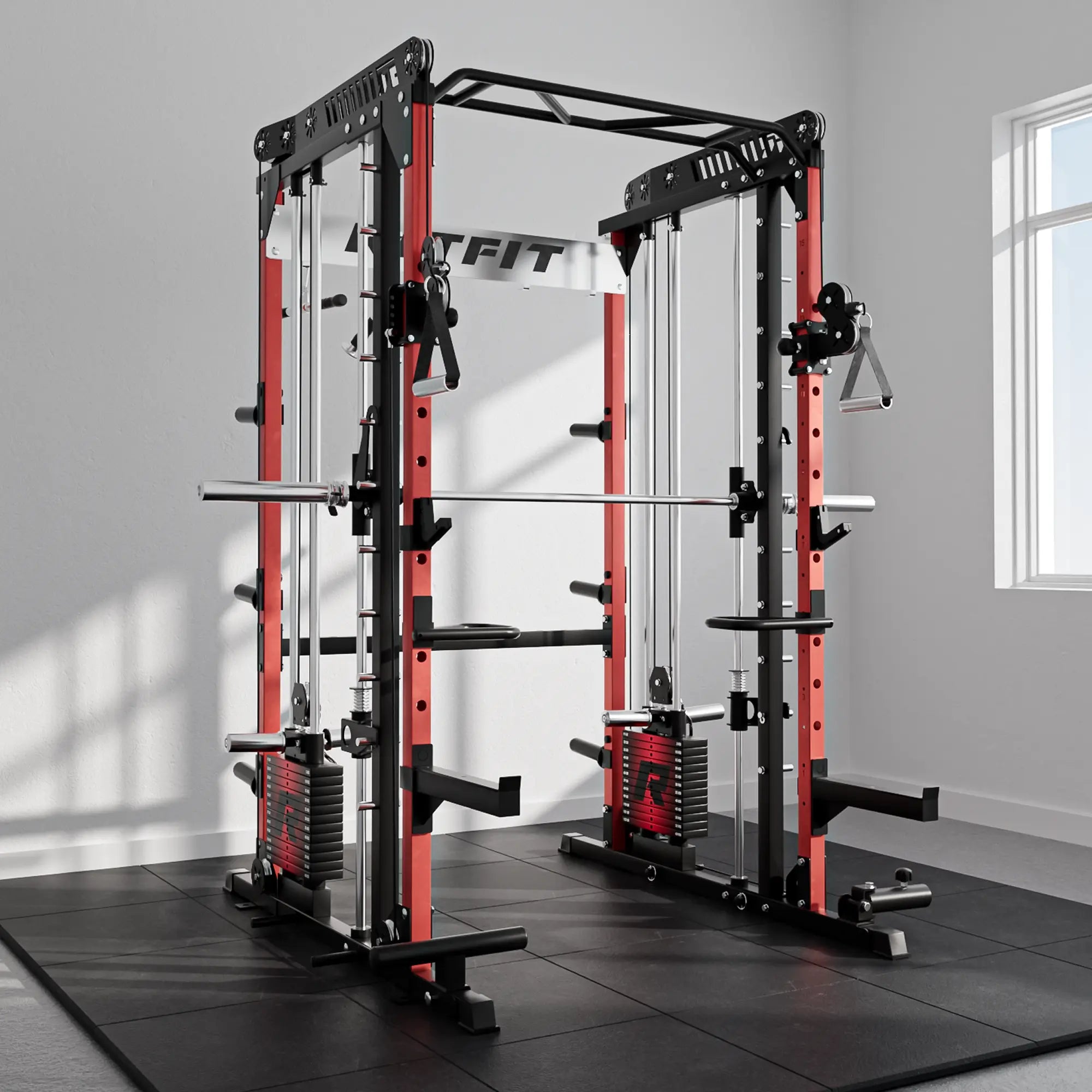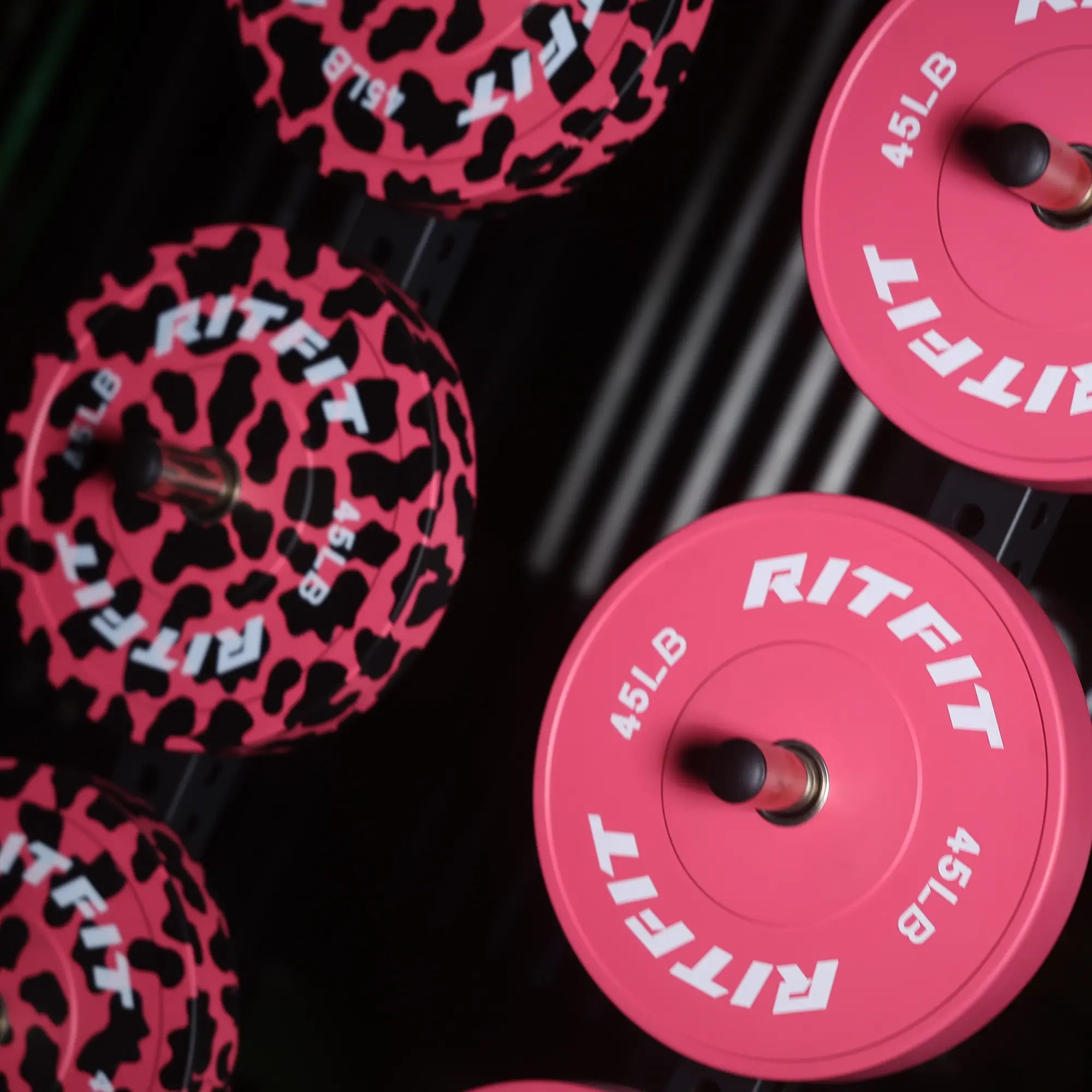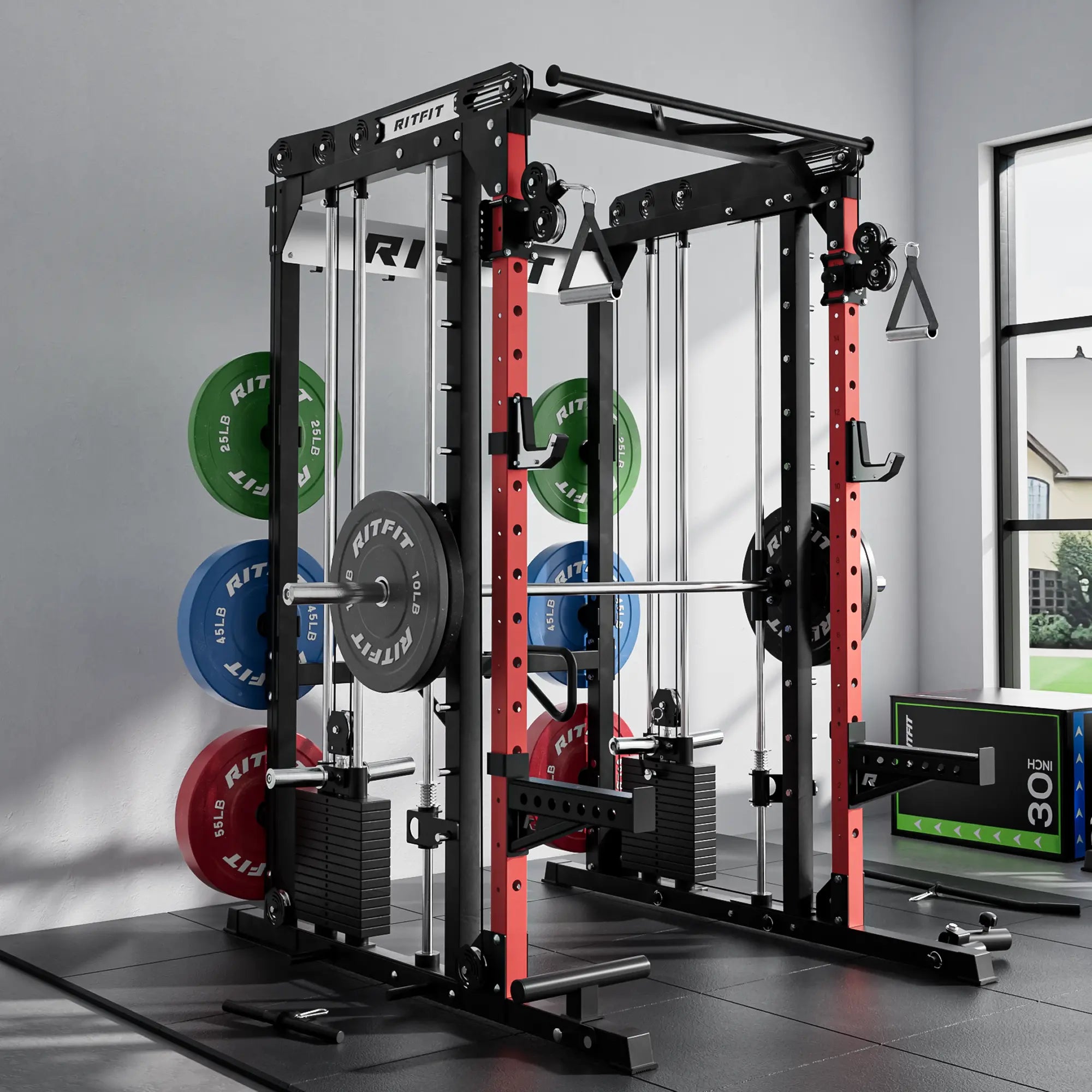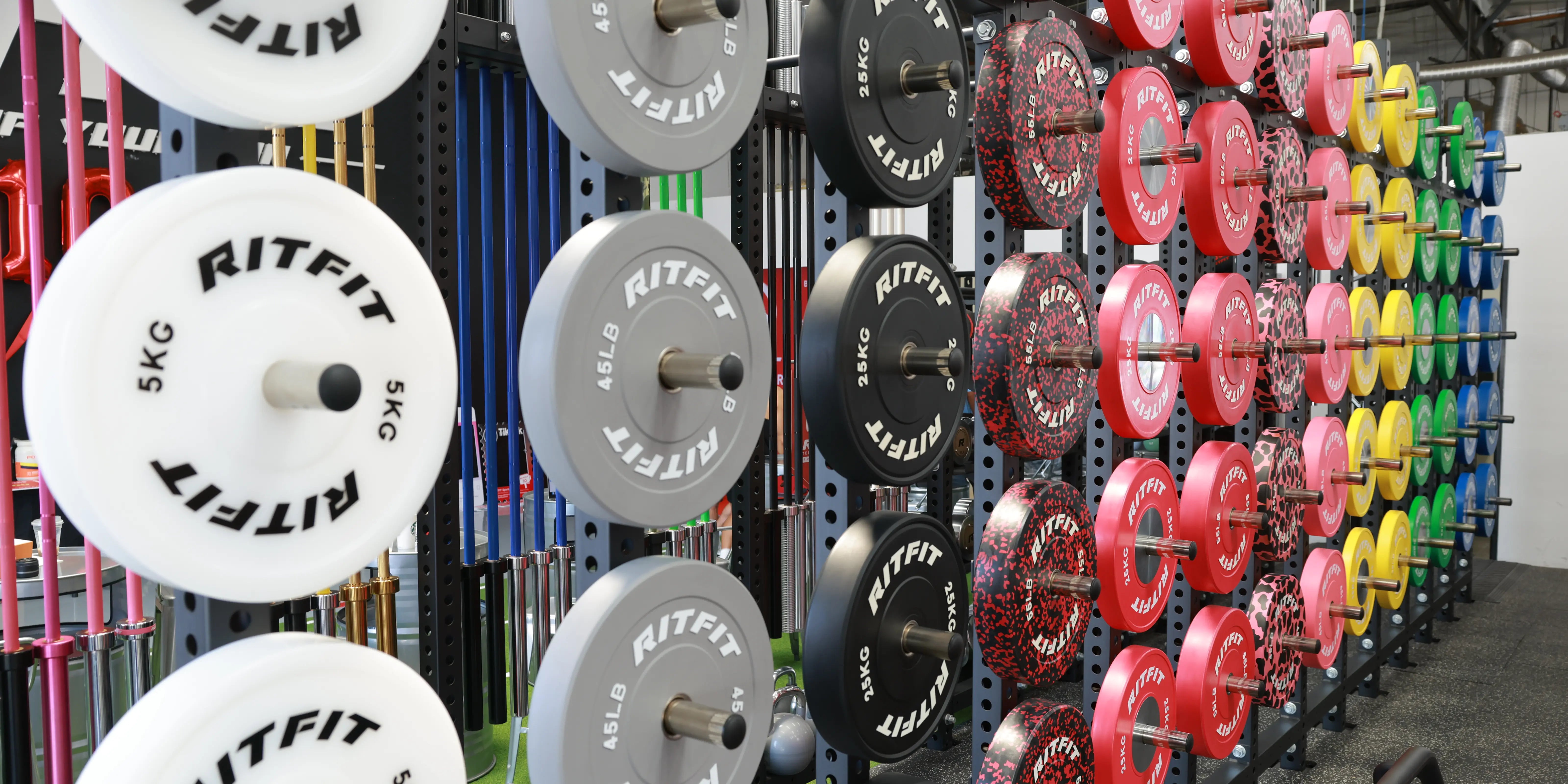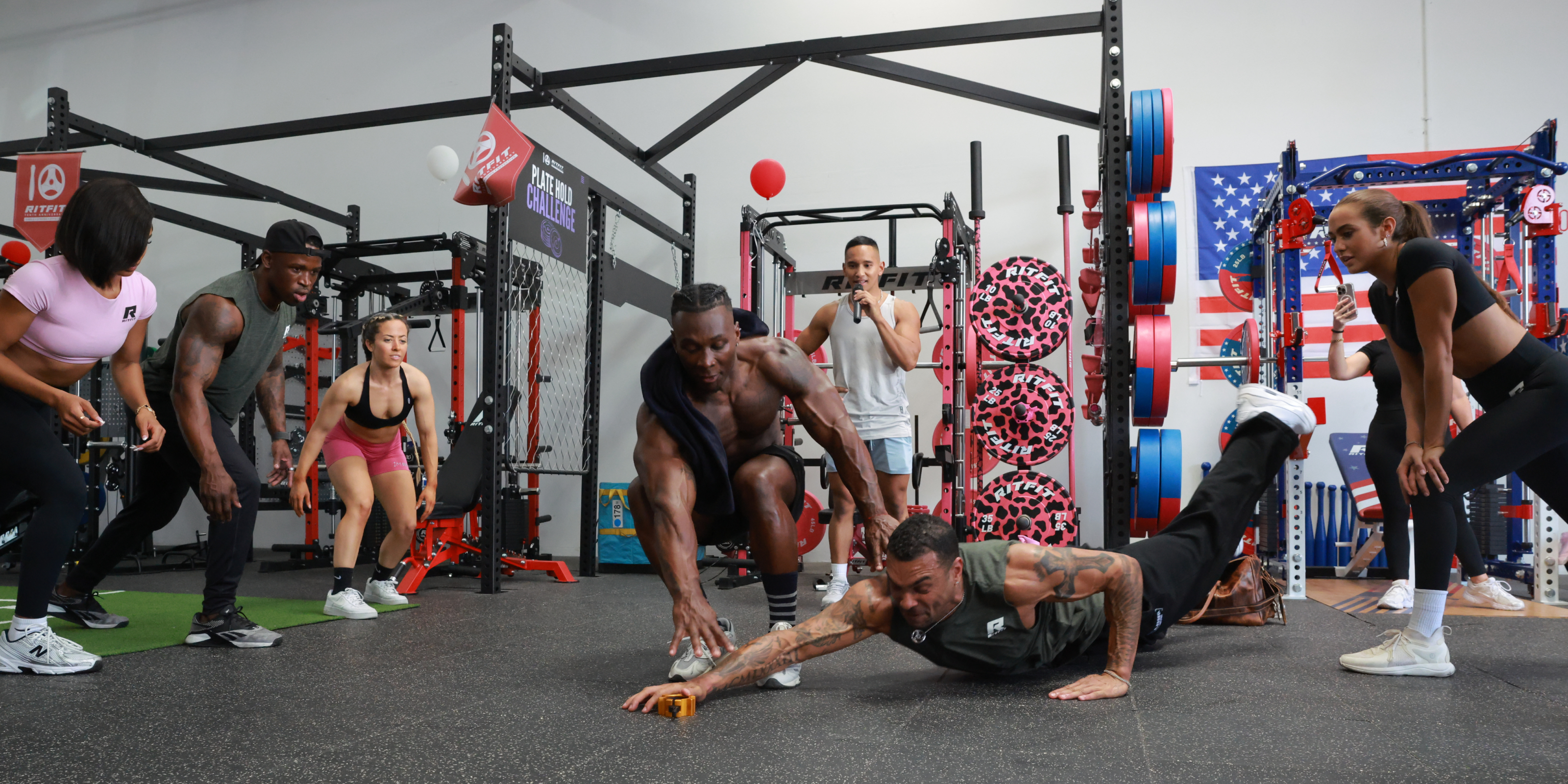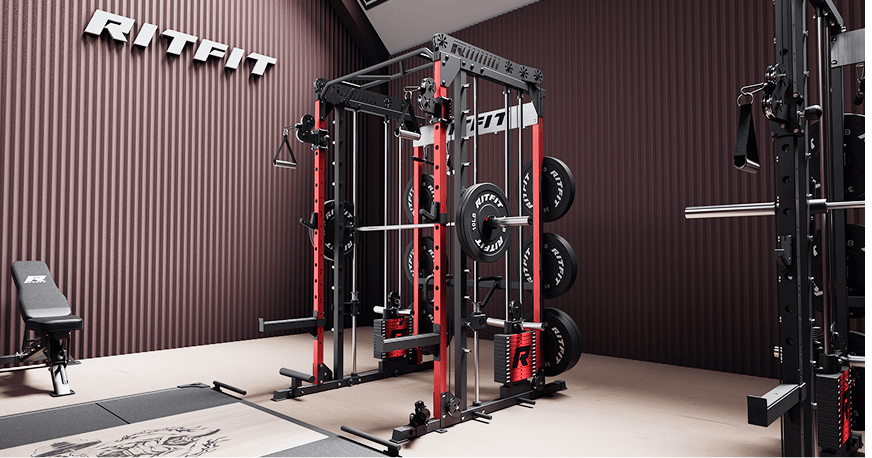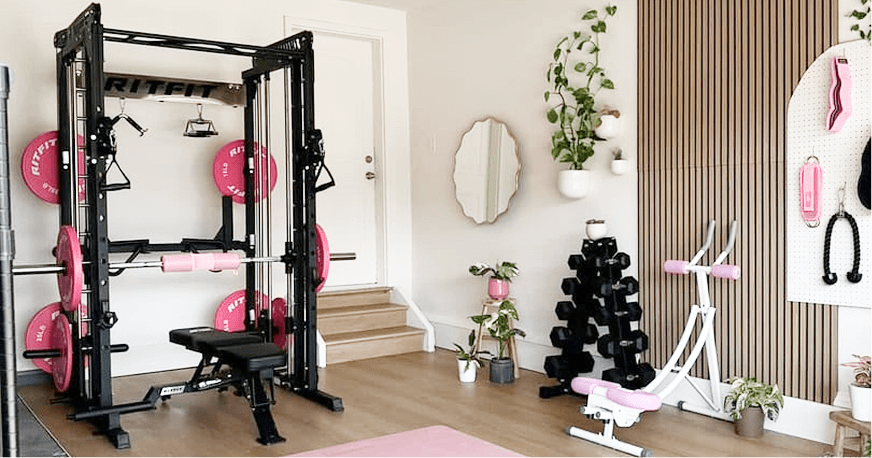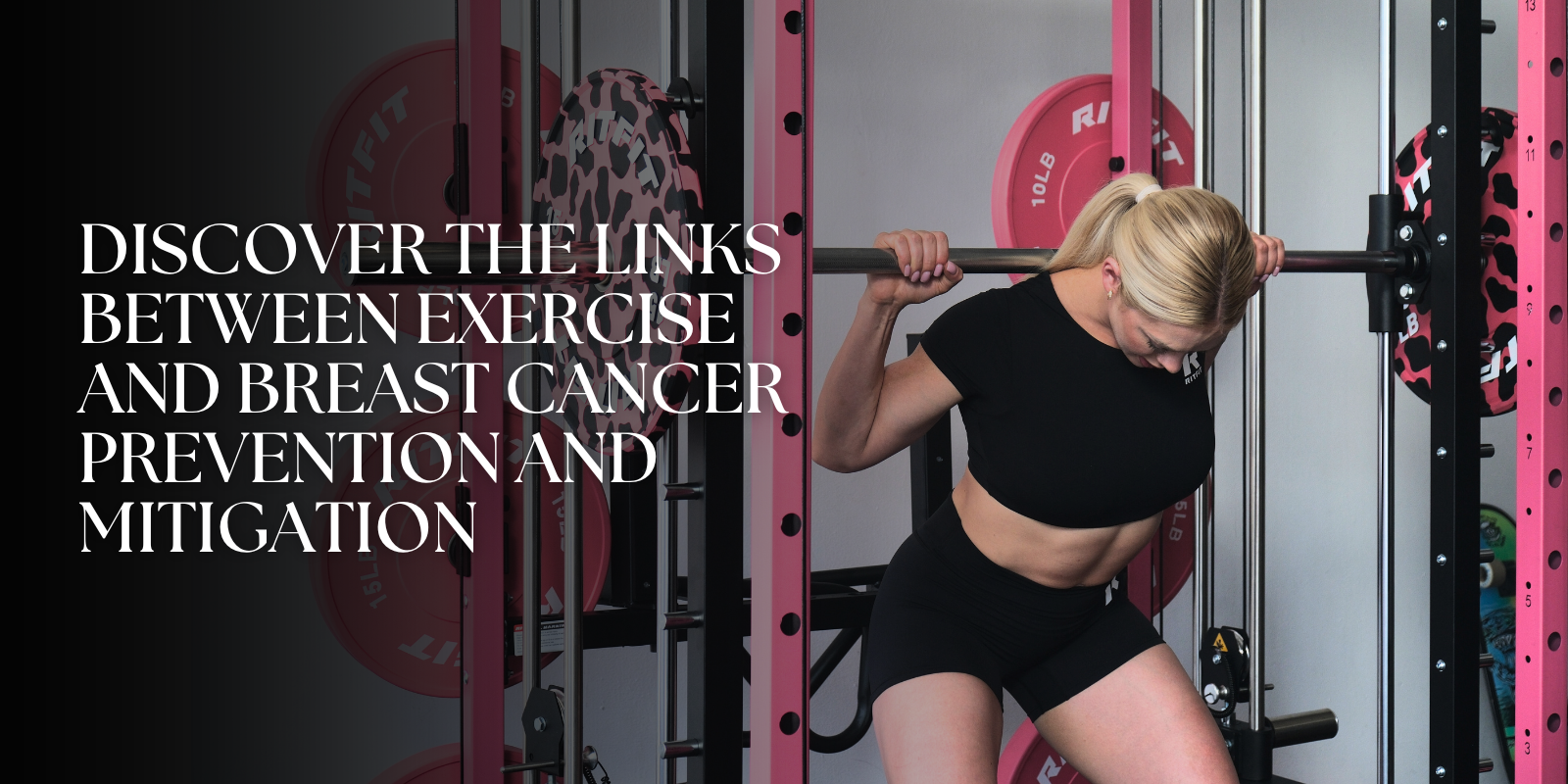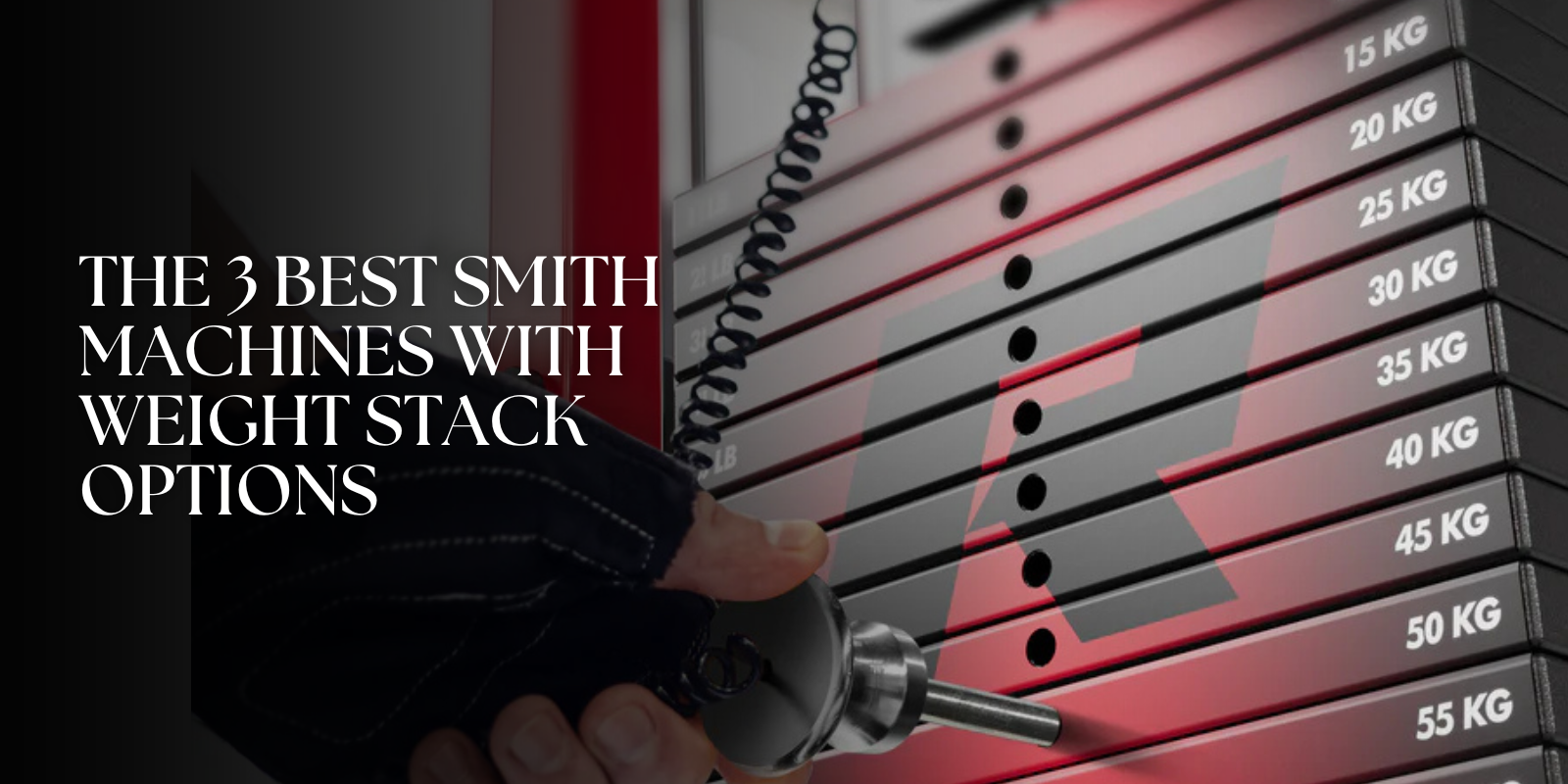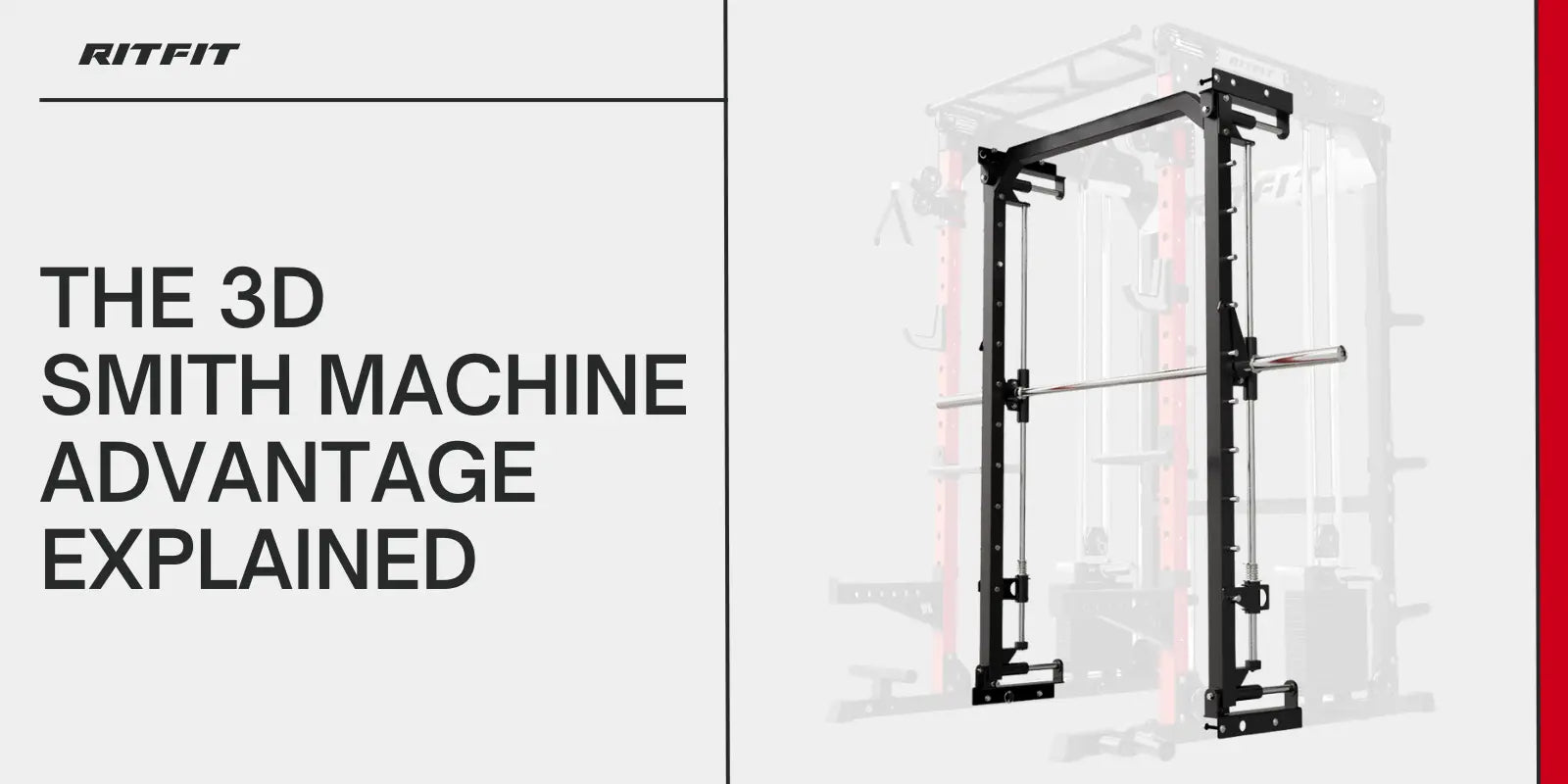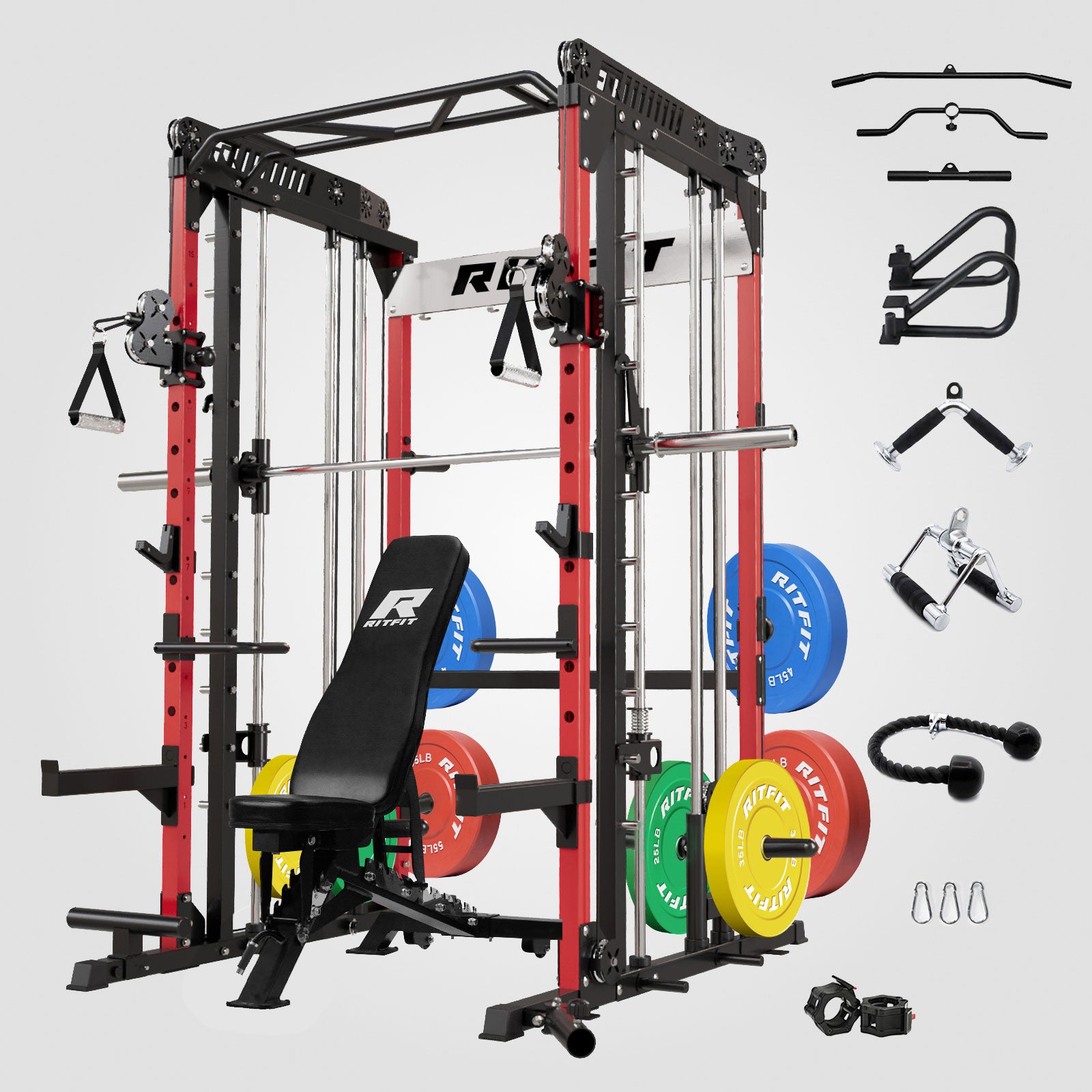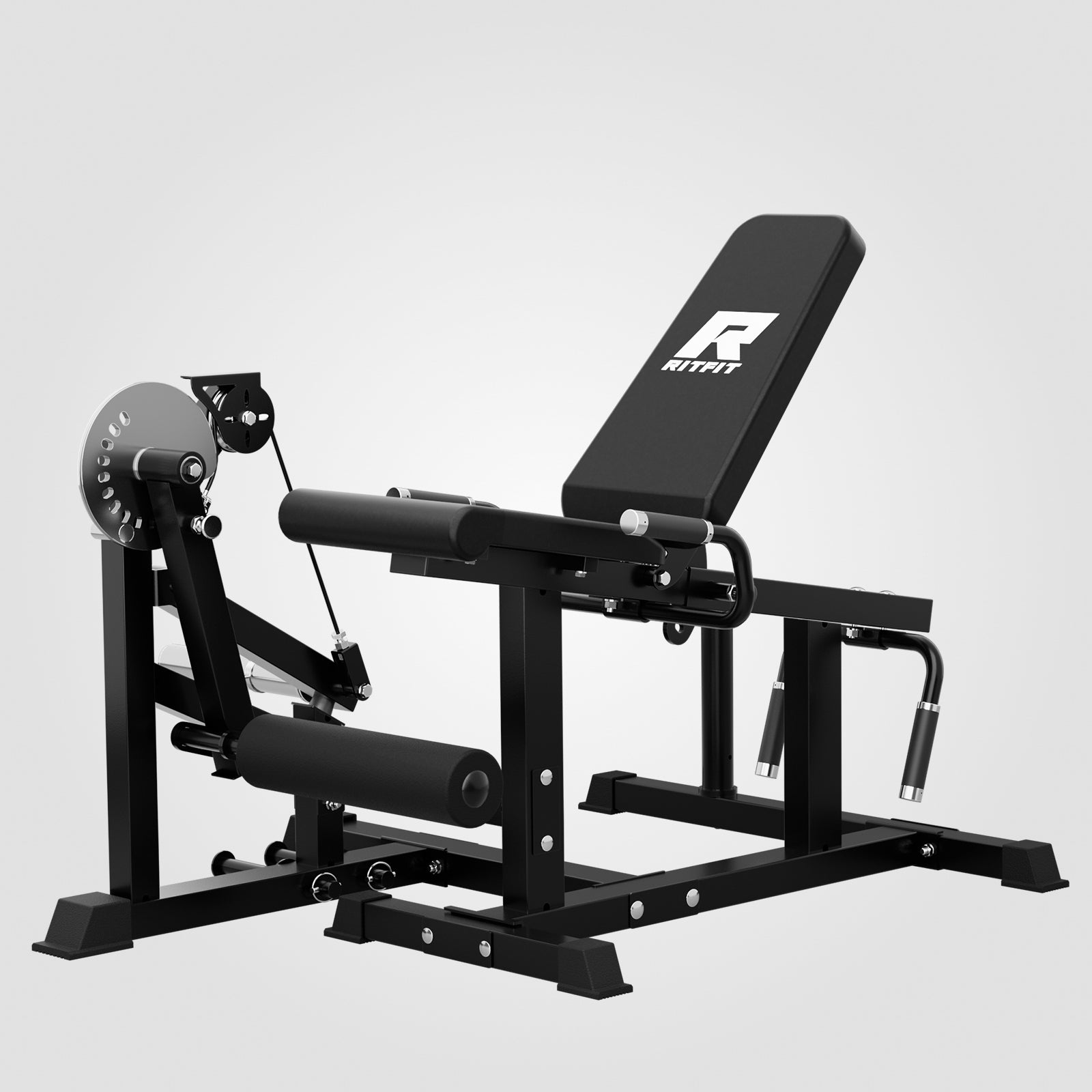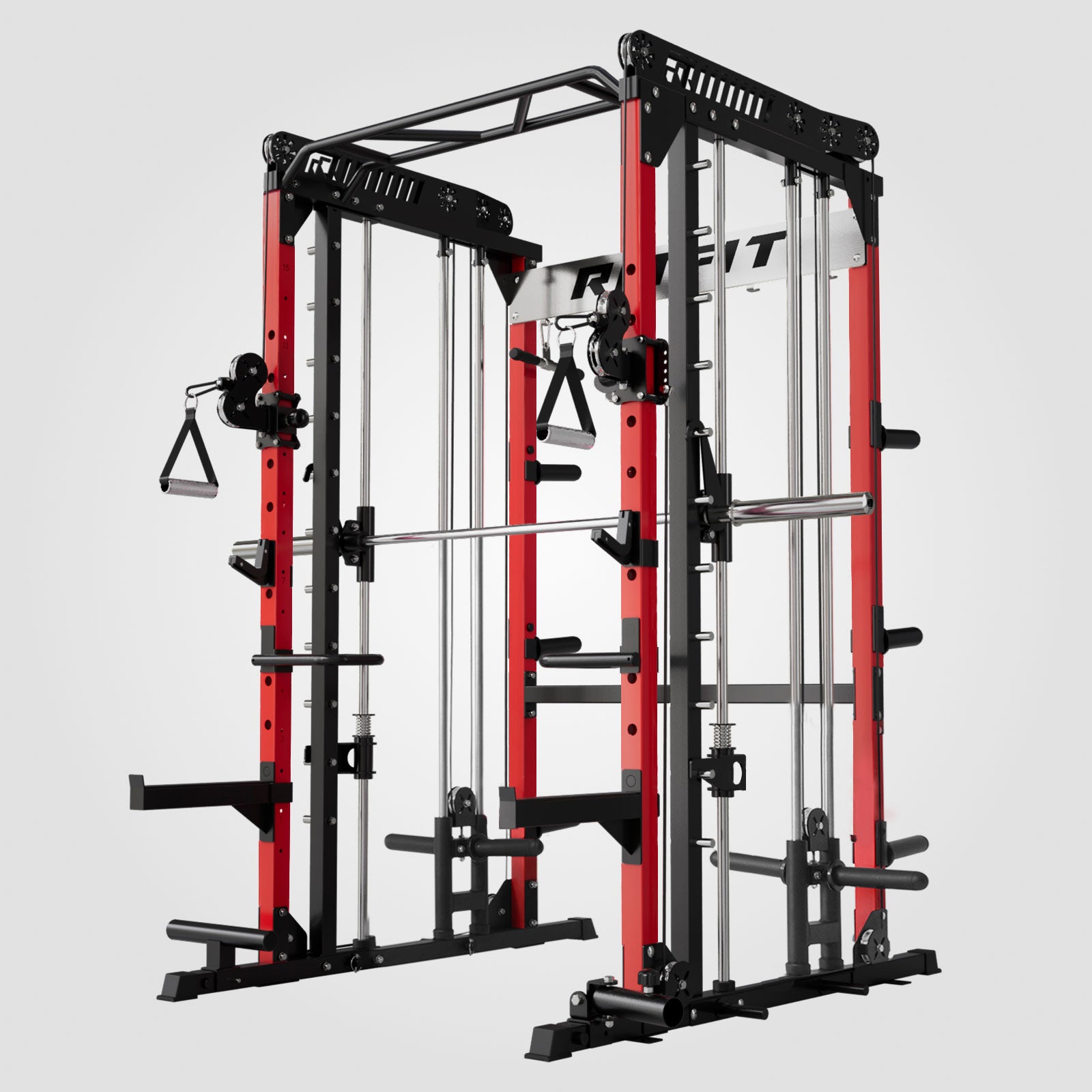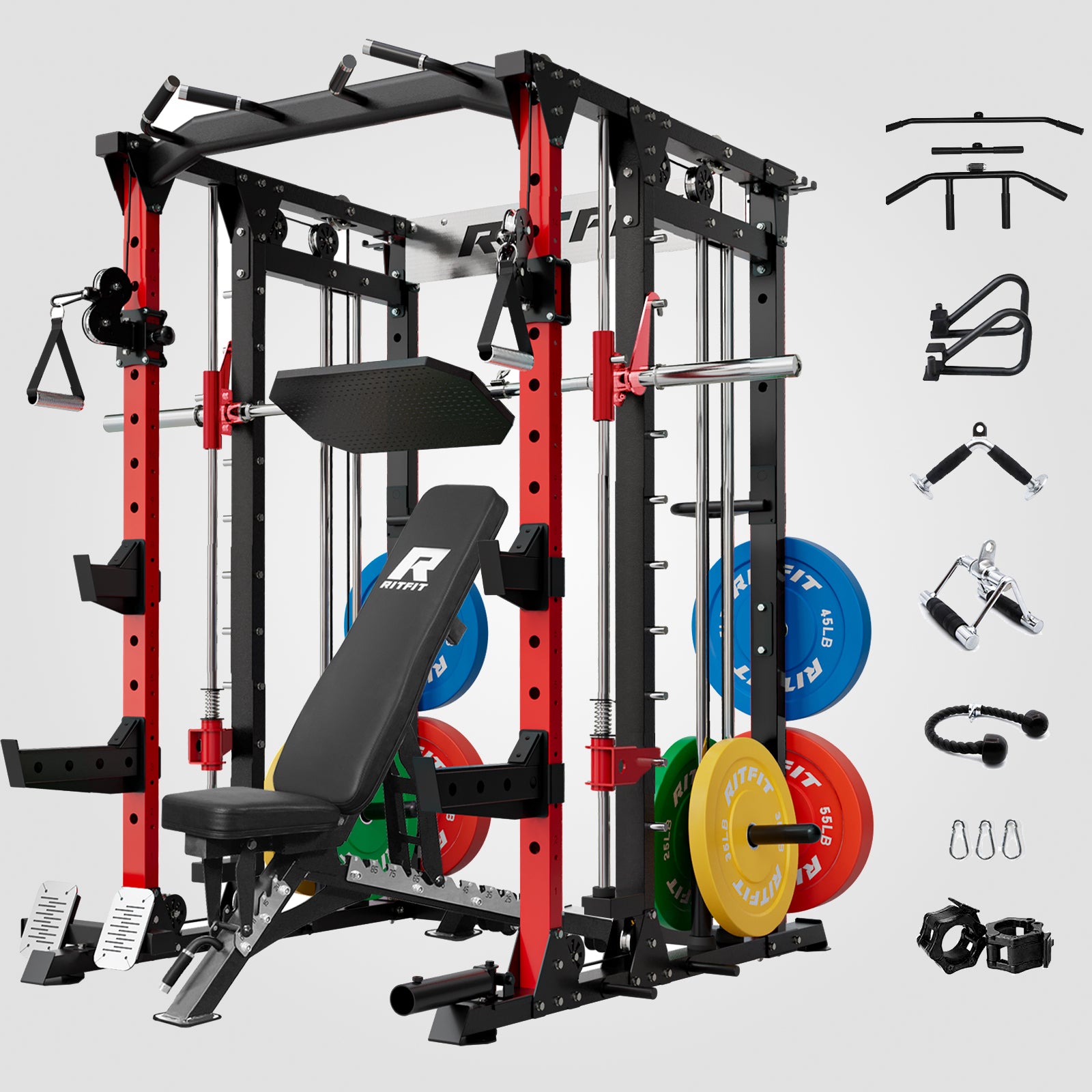A strong and muscular back and arms are indispensable to building your dream physique. Although many people suggest you do pull-ups, not everyone is ready for them due to inexperience and lack of strength. Inverted rows or Australian pull-ups are the "down under" version of a pull-up that can help you build a solid back without overstretching your muscles.
Read on to learn everything about an inverted row, including the muscles it works, its benefits, and its alternatives you can incorporate into your workout routine.
What are Inverted Rows?
Inverted rows or Australian pull-ups are horizontal variations of rows. All you need is a bar, rings, etc., that you can hold to pull yourself up, working your upper back and arms in the process. Unlike a traditional barbell row, there is no extra stress on your back, allowing you to hit the target muscles perfectly.
Almost all of your pull muscles are targeted while doing rows, including the biceps, forearms, grip, and upper back.
Inverted Rows Form and Technique
How to Do Inverted Rows
Step 1: Set the bar on a stand or a squat rack at a suitable height.
Step 2: Lie underneath the bar and grip it with both hands. Lift your legs to be in a horizontal position.
Step 3: From the initial horizontal position, pull yourself up using your arms so that your chest touches the bar.
Step 4: Come back down in a controlled manner and repeat until your set is finished.
Inverted Rows Common Mistakes to Avoid
Incorrect Position of Bar
There is no standard bar position or height for everyone. You should set the bar according to your height so that your chest should touch it at the top of the movement. Lower the bar a bit if it touches your waist or neck.
Lack of Hip & Core Engagement
Although inverted rows are primarily meant for your upper back, they also engage your core and glutes. Keeping your glutes in line with the rest of the body is essential for maintaining proper posture. Otherwise, you might end up injuring yourself.
Similarly, core engagement is indispensable for having the right form. Try doing glute bridges and core strengthening drills if you cannot engage these muscles effectively during your workout.
Wrong Grip
Grip width varies from person to person, with different strength and comfort levels. However, keeping your grip wider than shoulder-width is always a good idea if you're a beginner.
Hyperextending Your Knees
There is no reason why your knees should hurt during rows because they are meant for your upper body muscles. However, if it's happening, you're hyperextending your knees. To overcome this problem, try bending your knees slightly to alleviate the pressure on them.
Inverted Rows Muscles Worked
Latissimus Dorsi/Lats

Latissimus Dorsi, commonly known as lats, are the largest muscles in your upper back. They extend from your lower spine to your arms and adduct, extend and internally rotate your shoulders. As an inverted row involves a lot of pulling motion, lats are the primary muscles targeted during the movement.
Rhomboids

Retracting the scapula is essential to maintaining good posture, which is what rhomboids are responsible for. An inverted row heavily involves rhomboids pulling the shoulders back towards the spine.
Biceps
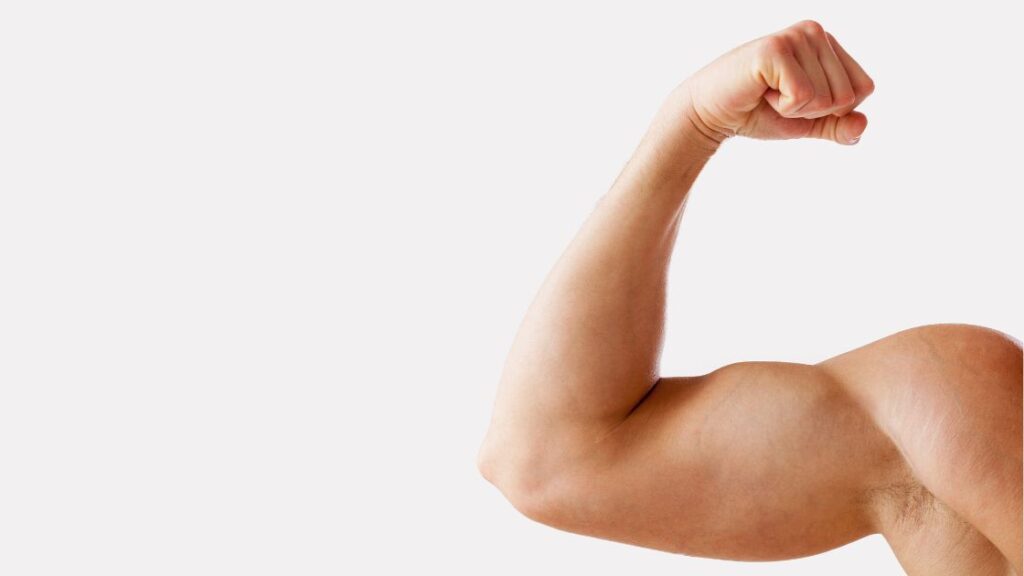
Biceps brachii, also known as biceps, are located in front of the upper arm, and their function is elbow flexion. An inverted row heavily involves your biceps, as they help you pull your body up towards the bar.
Inverted Rows Benefits
Upper Body Growth
A strong back is a must whether you're looking for aesthetics or posture stability. It also helps prevent injuries, so working out back muscles should be part of your regular workout routine. Rows target your lats, rhomboids, delts, biceps, and forearms, providing an incredible upper-body workout experience.
You can make the workout harder or easier, depending on your experience. Even if you can do pull-ups, rows can still be a staple in your workout routine, providing you with a different angle. You can do them at the end of your back workout to test the muscles to their limits.
A Stronger Grip
Although many people ignore this aspect, rows can help you strengthen your grip quite effectively. Biceps and forearms contribute to your grip strength, and inverted rows target these muscles intensely. As you strengthen your grip, your ability to lift weights also improves, which can also lower your mortality risk.
You can mix different grips to achieve different goals:
- An overhand grip is incredible for building grip strength.
- Underhand grip targets the biceps and helps them grow.
- A mixed grip enables you to manage grip fatigue to do more volume.
Great for Beginners
Beginners often seek exercises that can help them build muscles without overexerting them. Usually, using your body weight is a great start for any beginner.
Rows without weights can help you learn the exercise pattern properly. You can perform them anywhere, so you don't require a gym membership.
Pull-ups Progression
As everyone knows, pull-ups are one of the hardest exercises around. They require immense focus, strength, stability, and control. Therefore, developing the necessary strength is important instead of doing them without any preparation.
Rows help you prepare for tougher exercises like pull-ups and bent-over rows. They provide a similar experience to pull-ups without the intensity of pull-ups. Beginners can try them at home without equipment and then progress to more complex movements.
Targets Multiple Muscles
Compound exercises target more than one muscle group simultaneously instead of isolating a muscle group and are better at stimulating growth. Adding compound exercises to your workout routine can help you improve physical performance and fitness. Rows are also a compound exercise that targets different muscles simultaneously, such as the back, biceps, forearms, and even glutes & hamstrings.
Therefore, you can benefit immensely from including rows in your workout routine. Research suggests that instead of training one muscle one day, you can go for full-body workouts or train multiple muscle groups simultaneously for better growth. That's why you must have compound exercises like inverted rows to do full-body or upper-body/lower-body routines.
Inverted Rows Variations
Inverted Ring Rows
Step 1: Fix the rings to sturdy support and grab them to lean backward horizontally.
Step 2: Choose an appropriate angle according to your strength and experience.
3rd Step: Keep your spine neutral while engaging your glutes and core.
Step 4: Pull yourself up and contract/squeeze your shoulder blades on top of the movement.
Step 5: Return to the original position in a slow and controlled manner and repeat until the completion of your set.
TRX Inverted Row
Step 1: Lie down underneath the TRX and grab the TRX handles to lift yourself off the ground.
2nd Step: Keep your entire body in a straight line while you look up at the ceiling.
Step 3: Contract your back muscles while lifting yourself and squeeze your shoulder blades on top of the movement.
Step 4: Slowly lower yourself until your arms are straight, and ensure your body is straight.
Table Inverted Rows
Step 1: Lie under the table and grab its edge with both hands.
2nd Step: Make sure there is no bend in your body by keeping it as straight as possible.
Step 3: Lift yourself to the bottom of the table and squeeze your shoulder blades.
Step 4: Bring your body down to the original position and repeat.
It is a reasonably advanced exercise which might be too much for beginners. What you can do instead is to bend your knees and bring them closer to your hips. Doing it this way will help you gain enough strength while finally keeping your body straight.
Inverted Bodyweight Rows
Step 1: Set the bar, preferably on a Smith machine, and hold it at shoulder width.
Step 2: If you're a beginner, bend your knees and bring them closer to your hips. Experienced people should keep their legs extended, as it makes the movement more challenging.
Step 3: Keep your body straight and pull yourself up with your arms. Squeeze your shoulder blades on top of the movement and bring your chest closer to the bar.
Step 4: Bring your body back to its original position while controlling it.
Inverted Rows at Home Without Equipment
Step 1: Place two chairs at a suitable distance and place a broomstick on them.
2nd Step: Treat the broomstick as a bar and grab it with both hands at a suitable distance.
Step 3: Pull your body up using your arms and go as high as possible. Try to bring your chest as close to the broomstick as possible and squeeze your shoulder blades.
Step 4: Keep the movement controlled and bring yourself down slowly.
Make sure the broomstick and chairs are strong enough to handle your weight. Otherwise, they might break, and you could get injured.
Inverted Row Alternatives
Although rows are excellent for what they do, people might still not do them for some reason, such as the lack of suitable equipment, etc. If you're one of them, here are some great alternatives you can try.
Barbell Bent-Over Row
The barbell bent-over row is one of the best upper-body exercises and a great alternative to an inverted row. One of its prominent advantages is that you only need one piece of equipment to perform it. Moreover, it targets all the muscle groups that an inverted row targets, so you'll feel similar stimulation from this exercise.
Single-Arm Dumbbell Row
The single-arm dumbbell row isolates one side of your muscles and lets you target them much better. Moreover, it forces you to engage your core and other muscles as stabilizers. Ensure your back is straight during the movement, as developing an arch can hurt your spine.
Pull-ups
Pull-ups are one of the best upper body exercises. You only need a strong bar to perform it at your home, gym, or local park. Pull-ups involve multiple muscles simultaneously and help you build serious strength.
However, pull-ups aren't the best choice for beginners, as they require serious strength. That's why it's suggested to start with rows and progress toward pull-ups.
Sumo Deadlift High Pull
Sumo deadlifts high pull is another exercise that targets all the muscles targeted by rows. It isn't about the amount of weight you can move in this exercise but the efficiency with which you move it. Instead of going with the heaviest barbell, lift something you find challenging and manageable simultaneously.
The sumo deadlift puts tension on all the muscles that rows exert, including the hamstrings, glutes, upper back, arms, etc. Whether you're a beginner or an expert, the sumo deadlift can be a game changer for anyone.
Inverted Rows FAQs
Q: Inverted Rows vs Pull-ups. What’s the difference?
The inverted rows and pull-ups differ in intensity, difficulty level, and technique. Pull-ups are much harder, as they are done vertically and require immense strength from several muscles. On the other hand, rows are done in a horizontal position and are much more manageable for your body, especially if you're a beginner.
Q: Who Should Do the Inverted Rows?
Rows are perfect for beginners who want to build a strong upper back and arms. Pull-ups can be demanding for beginners as they require a lot of strength. Rows can also benefit those who want to return to their routine after an injury but don't want to exert their muscles fully.
Q: How often should I do inverted rows?
The frequency of rows depends upon your experience and strength levels. If you're a beginner, you should do them at least once or twice a week, depending on your workout routine. You can also do them thrice a week if you prefer full-body workouts.
Q: How many reps and sets should I do for inverted rows?
The number of sets and reps for rows depends on your goals. If you're looking for hypertrophy, do at least 3 sets with 8-12 reps with 1-minute breaks. Those looking for strength should go for 4-5 sets of 6-8 reps with 30-second intervals.
Q: How to add inverted rows to my routine?
Rows should be added to your workout schedule to complement other exercises. For instance, do them on your pull days and give the muscles proper rest. For better results, beginners should do inverted rows twice or thrice a week.
Q: How do I progress with the inverted rows?
Although rows are comparatively easier to pull-ups, they can still be challenging to some people. The first variation you can try is to bend your legs and bring them closer to your hips. You can extend your legs to make it harder as you gain strength.
Summary
Building a strong back and arms with inverted rows is highly beneficial and should be a priority in your workout routine. Make sure you're doing them with a proper form and adding variations to make them more exciting and rewarding. If you're a beginner, try bending your legs to make them manageable and extend your legs as you progress.
Ensure you're not making the abovementioned mistakes, such as gripping the bar wrong, hyperextending your knees, etc. If you do rows correctly, nobody can stop you from building a dream upper body.

